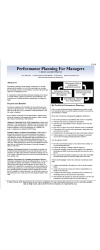Answering Angry, Frustrated And Abusive Customers
In an ideal world, your customers would understand your policies and procedures and abide by them. You know we don’t live in an ideal world.Whether it’s a policy regarding return of merchandise in the retail sector or a policy regarding who can receive specific government services, often customers don’t understand why those policies and procedures are in place. A customer who doesn’t understand the purpose of a policy is more easily angered when the policy interferes with getting what he or she wants. If you explain the policy and the reasoning behind it so the customer understands, you are much less likely to receive flak about the policy.
TECHNIQUES USED
■ Preemptive Strike (1)
■ Plain Language (2)
■ Provide a Customer Takeaway (3)
Demonstration Dialogue On Explaining Company Policy To An Angry Customer
This example occurs in a government office, although similar situations could occur in any other sector. The customer
is asked to furnish some mandatory information so his application can be processed. Without the information the
application can’t be processed. We join the conversation after the customer makes his original request.
Employee: I know this is going to be frustrating, but in order to process your application, we need to have some proof of identity, really two pieces of I.D. (1). One needs to have your picture on it.We also need proof of residence.
Customer: Darn right, it’s frustrating. Why are you putting me through all of these hoops? It’s just typical of
bureaucracy that I have to fill in umpteen forms and give you all kinds of personal information.
Employee:Maybe it would help if I explain why we need this information. Then it will make more sense. The major reason we ask for this information is to make sure that nobody can steal your identity and use it. That’s why we need positive proof so we are absolutely sure that nobody can do that. It’s for everyone’s protection (2).
Customer: Well, OK. What exactly do you accept?
Employee:We accept a number of documents, and I have a pamphlet that you can keep that lists acceptable identification. But let’s go over the documents you can use (3).
Explanations — Why These Communication Techniques Work
In this example, the employee knows that customers tend to resent having to provide the necessary documents. To cushion the blow, the employee uses the preemptive strike (1) to acknowledge that the customer may feel upset about the requirements. The premise here is that it’s better for the employee to broach the subject of frustration, rather than wait for the customer to do so first.
Notice how the employee explains the purpose of the requirement. She explains it (2) in plain language and from the point of view of the customer. When explaining policy, it’s best to highlight how the policy benefits the
customer and to avoid sounding bureaucratic.
In (3) she offers some printed material to the customer, a “takeaway.” Why? So the customer doesn’t have to rely only on his memory for critical information. The customer will be able to use this material if he has to come back. Also, note that the employee goes over the takeaway with the customer and doesn’t rely on him reading the document.
Hints For Communicating Policy To Customers
When explaining policy, it’s best not to quote a specific policy number, clause, or detail from a policy manual.
Policies and procedures are usually not written with the customer in mind, and the language can be excessively bureaucratic. Also, it tends to suggest that your focus is on policies and procedures rather than people.
Rephrase the policy in plain language. If you don’t know the rationale behind a policy or procedure, you can offer to find out for the customer.






